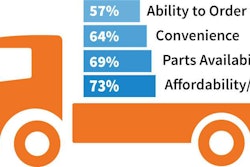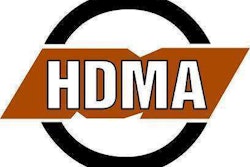For those who saw the release last month, MacKay & Company is nearly ready to launch a comprehensive study into the growing number of fleets who are beginning to purchase products online.
As a preliminary probe, the study’s initial findings were released before Heavy Duty Aftermarket Week (HDAW), and among the information presented in those findings was the revelation that 55 percent of fleets have already purchased a part online, and that 47 percent of the fleets who haven’t will consider doing so in the future.
The main reasons fleets said they were turning to the Internet to purchase parts were obvious: price; product availability; and convenience, but the preliminary study also uncovered the No. 1 reason a fleet wouldn’t purchase a part online was delivery/wait times.
I can’t say that’s surprising.
As we all know, part acquisition wait times are one of the biggest pressure points for service centers across the trucking industry. Downtime in any form is discouraging, but downtime due to an active repair is at least a step in the right direction. If someone is turning wrenches progress is being made.
Part-acquisition related downtime has no such positive connotation. A truck sitting in a bay (or on a lot) for days or weeks while a technician waits for a part is unbearably frustrating for everyone involved.
For what it’s worth, everyone knows this. OEMs, suppliers and TMC are constantly developing and refining processes to improve parts order fulfillment rates and delivery times, and I can’t name a single distributor who isn’t willing to rush order and deliver a part to a service center to help expedite a repair.
Spurred by MacKay & Company’s data, the team at the American Council of Frame & Alignment Specialists (ACOFAS) conducted a straw poll of its own, asking its members for their assessment on who is waiting longest for parts. Though the poll lacked the formality of MacKay & Company survey, it still uncovered a few interesting nuggets.
Small fleets are most reliant on distributors: Of the businesses doing service in our industry (dealers, independent garages and vehicle owners) small fleets and owner-operators carry the smallest inventory. Unless it’s an accessory or a wear part replaced during PMs, most small fleets don’t purchase a component until it breaks. This leads to an obvious conclusion: Because these customers are so much more heavily invested in their individual vehicles, there’s almost no chance they’re going to accept a two-week wait for a part. They might initially say yes just as a backup plan, but once they hang up with Distributor A they’re going to call B and C and down the list until they find the shortest wait time.
Procedure can handcuff some dealers: ACOFAS responders also say some dealers appear to be hampered by corporate procedure, specifically as its relates to stocking and purchasing parts. The responders say some dealer groups have agreements to purchase through specific channel partners. These agreements prove beneficial for stock orders and most conventional requests, but can be problematic in situations where an uncommon part is needed and cannot be found anywhere in the channel.
I’m not surprised by the first at all, though the second point gives me some pause. Most dealers I know are as aggressive in searching for parts as any independent business, and OEMs even have corporate employees who are responsible in aiding their dealers in parts acquisition.
I guess my question for the industry at large is this: Which parts are causing these awful waits? What components is the industry failing to adequately distribute to the aftermarket? Is it new technology, such as after treatment or emission parts? Or maybe sensors to newer safety systems?
What causes your techs to wait?
And from there. How can we fix it?











